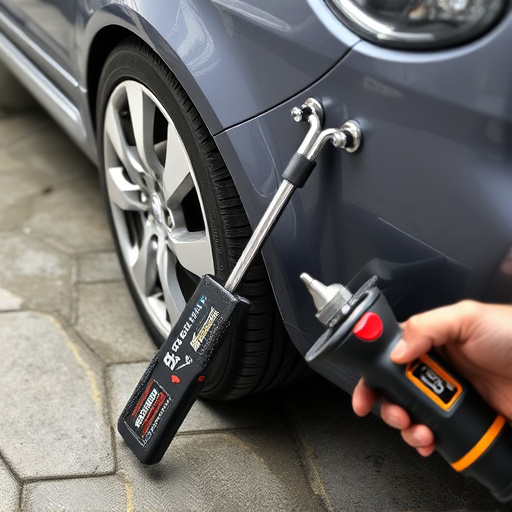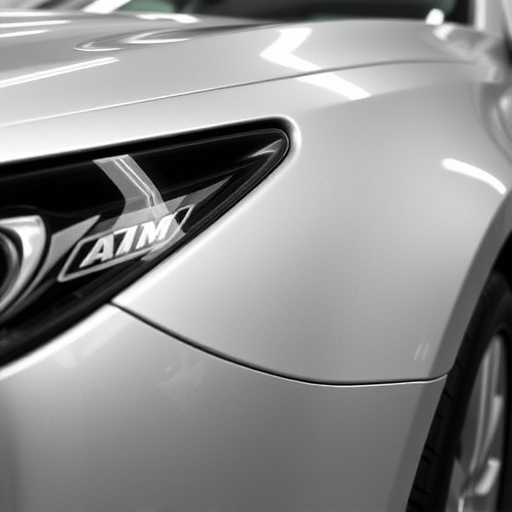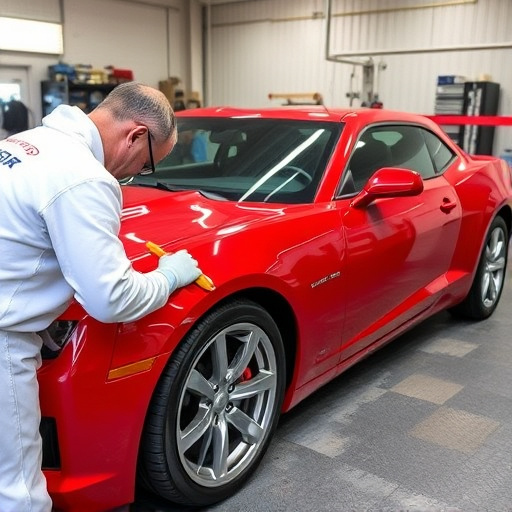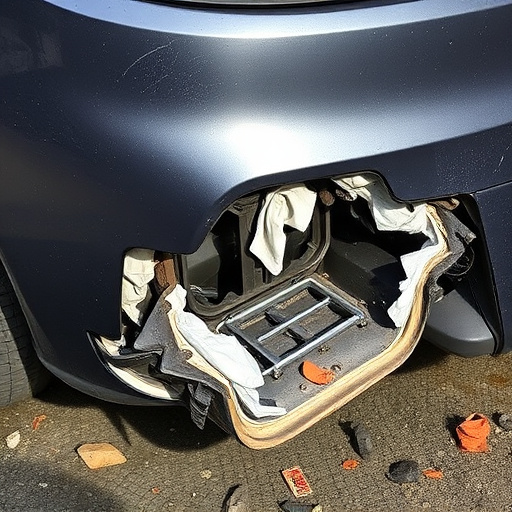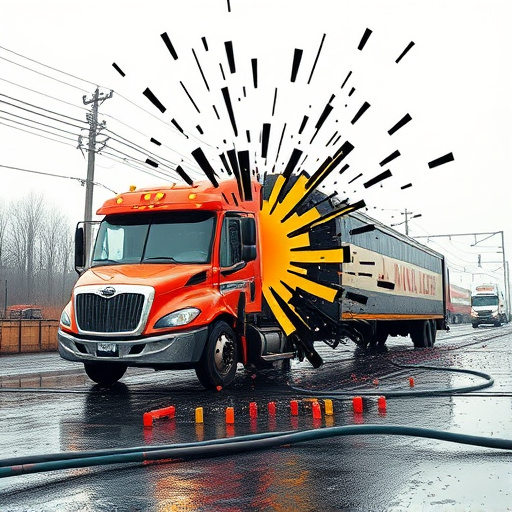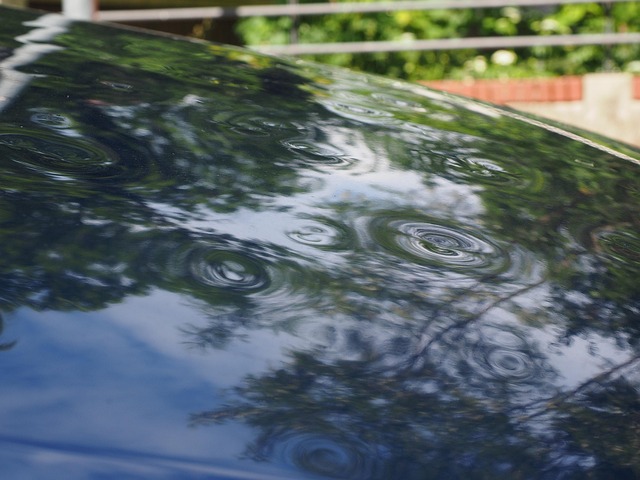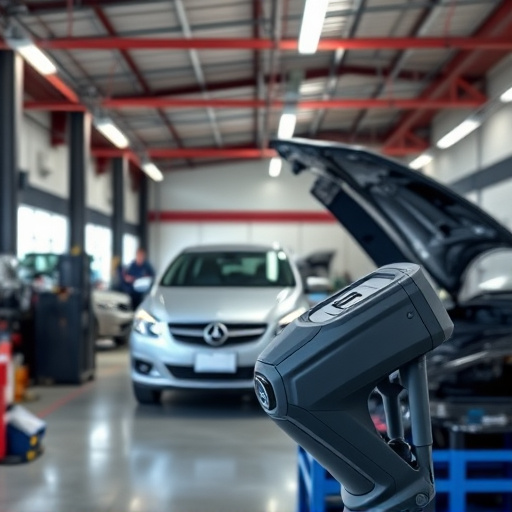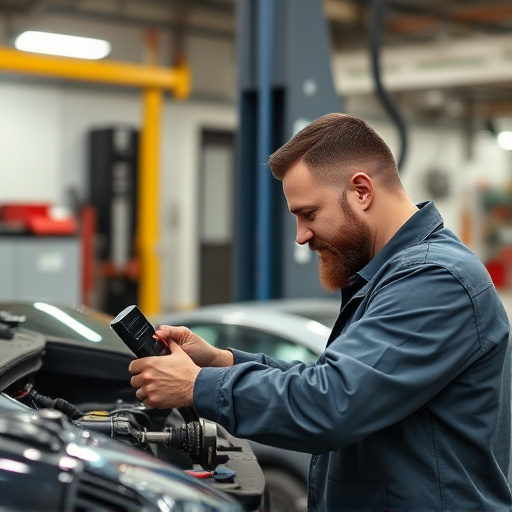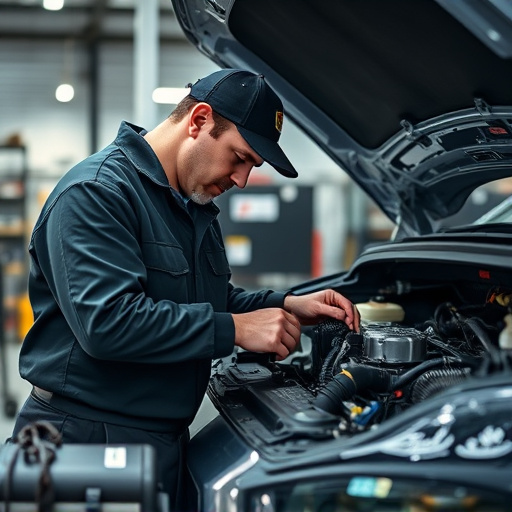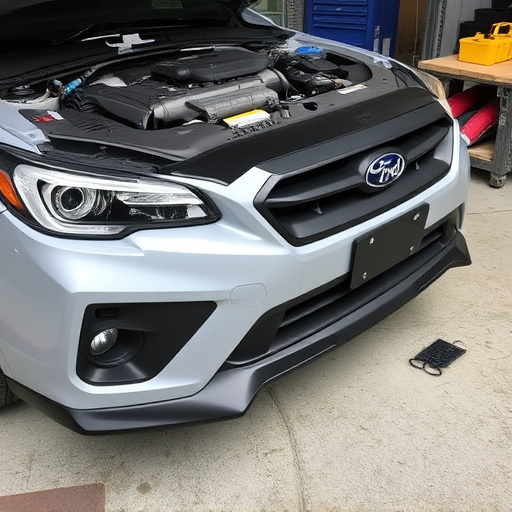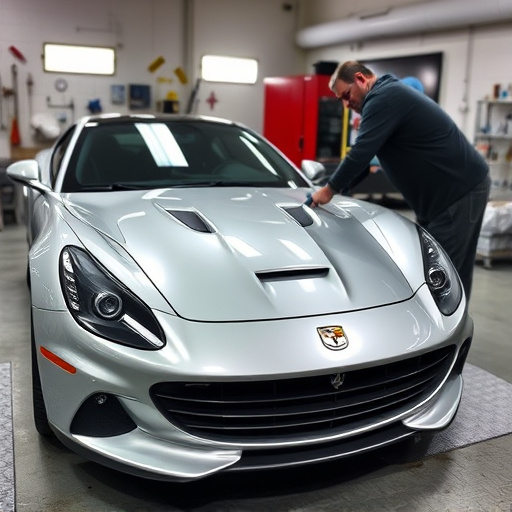Tesla Model 3 front fascia repair requires specialized techniques due to unique materials and electronic systems. Choosing a certified body shop is key for accurate repairs maintaining structural integrity and aesthetic appeal. Follow a structured approach including assessment, safety, demontage, restoration, part sourcing, reassembly, and finishing for seamless results aligning with Tesla's modern design.
“The sleek and modern Tesla Model 3 is a beloved electric vehicle, but like any car, it’s not immune to damage. One common issue owners may face is front fascia damage, impacting both aesthetics and safety. This article guides you through the process of repairing your Tesla Model 3’s front fascia at certified body shops. We’ll explore different types of damage, emphasize the importance of choosing accredited facilities, and provide a step-by-step repair guide for a successful and safe restoration.”
- Understanding Tesla Model 3 Front Fascia Damage
- Choosing Certified Body Shops for Repairs
- Step-by-Step Guide to Effective Front Fascia Repair
Understanding Tesla Model 3 Front Fascia Damage
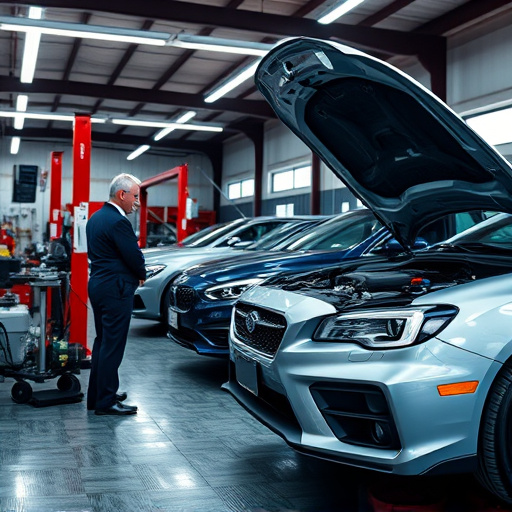
Tesla Model 3 front fascia damage can occur due to various reasons, from minor dents and scratches to more severe impacts. Common causes include parking damages, road debris, or even accidental collisions. Since the front fascia is a prominent feature of the vehicle’s exterior, it not only affects the car’s aesthetics but also its overall safety. In a Tesla Model 3, this component houses several important sensors and lights crucial for driving in different weather conditions.
When considering Tesla Model 3 front fascia repair at a certified body shop, it’s essential to approach it as a specialized process. Skilled technicians will assess the damage, using advanced tools and techniques suitable for electric vehicles. Unlike traditional automotive repair, classic car restoration methods might not always be applicable here due to the unique materials and electronic systems integrated into modern cars like the Tesla Model 3.
Choosing Certified Body Shops for Repairs
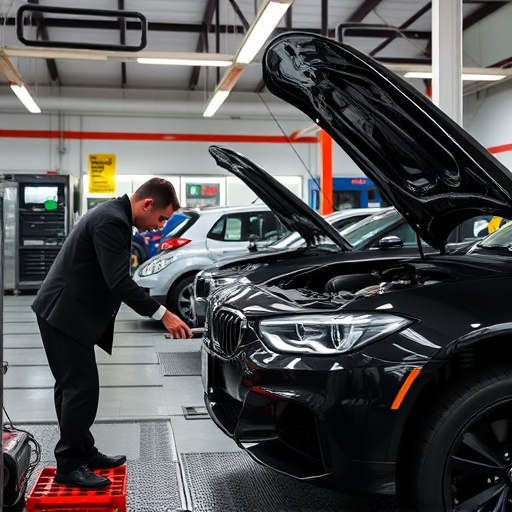
When it comes to repairing your Tesla Model 3’s front fascia, selecting a certified body shop is paramount. These specialized shops are equipped with the latest tools and trained technicians who understand the intricate design and materials of electric vehicles like the Model 3. Opting for a certified shop ensures that repairs are performed accurately and with the necessary precision to maintain the vehicle’s aesthetic appeal and safety standards.
Choosing a reputable body shop means you’ll benefit from specialized services tailored to address Tesla Model 3 front fascia issues, whether it’s a minor dent repair or more extensive collision damage. These shops prioritize not just structural integrity but also the restoration of your car’s original sleek and modern appearance, aligning with Tesla’s design philosophy.
Step-by-Step Guide to Effective Front Fascia Repair
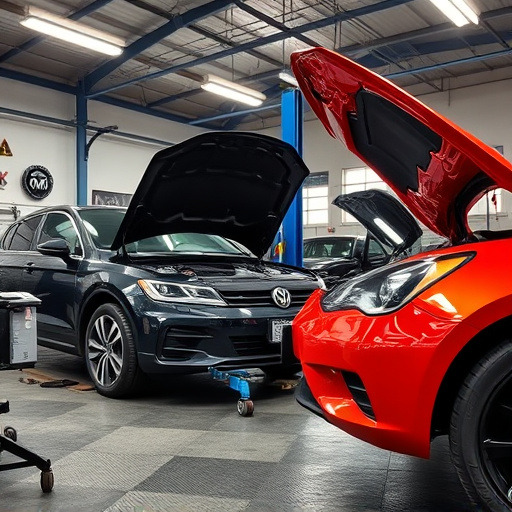
When it comes to repairing your Tesla Model 3’s front fascia after a minor collision or fender bender, following a structured approach is key to achieving a seamless result that matches the vehicle’s sleek design. Here’s a step-by-step guide for an effective repair process:
1. Initial Assessment: Begin by thoroughly inspecting the front fascia for damage. Check for cracks, dents, or misalignments. This initial evaluation will help you determine the extent of the repair required and guide your subsequent steps.
2. Safety First: Ensure the vehicle is safely secured and all hazards are activated before beginning any repair work. Protect yourself with appropriate safety gear, including gloves and eye protection, as you handle automotive parts and materials.
3. Demontage: Carefully disassemble the damaged front fascia components. This may involve removing the exterior panels, trim pieces, and any surrounding parts that need to be accessed for a proper fix. Remember, precision is vital to maintaining the overall aesthetics of your Tesla Model 3.
4. Damage Restoration: Address the underlying damage using suitable techniques and materials. For dents, consider using a pneumatic hammer or specialized tools for metal working. In cases where plastic parts are cracked, heat-welding or professional adhesives might be required.
5. Replacement Parts: Source high-quality replacement fascia components from trusted auto parts suppliers or directly from Tesla. Ensure compatibility with your Model 3 to guarantee a perfect fit. Some auto repair shops even offer tire services, which can be beneficial for concurrent wheel and suspension repairs.
6. Reassembly: With the new front fascia pieces in hand, meticulously reassemble the components, following the reverse order of disassembly. Pay close attention to how each part is fitted and secured.
7. Finishing Touches: Once everything is in place, inspect your work for any gaps or misalignments. Fine-tune as needed using appropriate tools. Finally, clean the area thoroughly to ensure a professional finish.
When it comes to repairing your Tesla Model 3’s front fascia, choosing certified body shops is key. With proper understanding of common damage and a step-by-step guide in hand, you can ensure a seamless and effective repair process. Remember, a well-executed front fascia repair not only restores your vehicle’s aesthetic appeal but also retains its value, making it a crucial task for any Model 3 owner. For a successful outcome, always opt for certified shops specializing in Tesla Model 3 front fascia repair.
